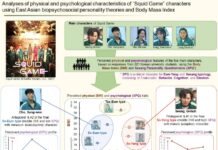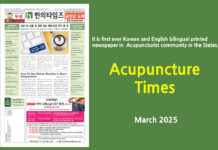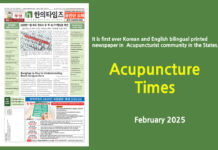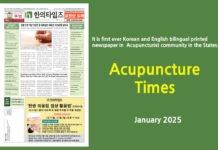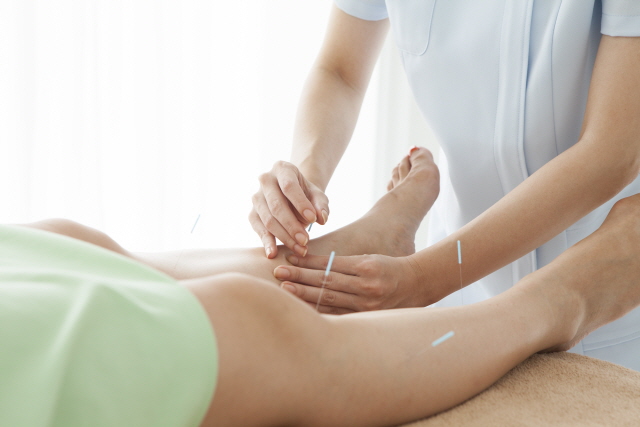- Author: Hyo-Jung Kwon(Department of Acupuncture & Moxibustion, Brain & Neurological Disorders and Pain, Yong-Suk Kim(Kangnam Korean Hospital, Kyung Hee University, Seoul, Korea)
- Copyright © 2015 by authors and Scientific Research Publishing Inc.
3. Method of Tonification and Sedation
Saam acupuncture is applied with stimulation techniques such as respiratory, rotational and directional methods. Each stimulation results in tonification or sedation. Tonification and sedation occur depending upon clockwise or counter-clockwise rotations in accordance with direction of Meridians. Tonification occurs following the insertion of a needle as the patient exhales and removal at inhalation. Sedation occurs on insertion of the needle as the patient inhales and removal on exhalation. Tonification occurs when the needle is inserted in the inclined position following the direction of the flow of Qi in the Meridian. By contrast, sedation occurs following insertion of the needle in the inclined position in the opposite direction to the flow of Qi in the Meridian [2]. In theory, the use of acupuncture stimulation may be possible in treatment but strong technical movements on acupoints located on shallow body surfaces, such as between finger tips and elbow or tips of toes and knee, may be hard for the practitioner to access. Clinically it is recommended that practitioner do not use strong stimulations. A simple and weak stimulation seems to be enough to gain the acupuncture effect.
4. Diagnosis Method
The scope of Saam acupuncture can be extensive because of its diverse laws, such as the promotion and inhibition (control) cycles among the Five Elements and their corresponding Meridians. A Meridian consists of three parts; that are, upper extremity or lower extremity, more or less of Yin and Yang, and one of Six Organs (Zangs including Pericardium) and Six Bowels (Fus). A total of 24 deficiency and excess symptoms exist across the Six Organs and Six Bowels, but theories related to these symptoms are too arbitrary to assist in making a diagnosis. Although there are currently many clinical books on Saam acupuncture in Korea, a definitive general standard for the selection of symptom patterns has not yet been established. The general use of Saam acupuncture has previously been discussed in 1985 [20]. The method can be used mainly from a theoretical viewpoint of the Organs, etiology of disease, as well as the more or less of the three Yang and three Yin. For example, in the case of knee pain, one can use Liver-tonification (mostly deficiency condition) because, according to the theory of the Organs, the Liver controls the muscles and joints. Secondly, in the case of headache due to increasing Liver-Yang, one may use Liver-sedation (mostly excess condition) given the etiology of the disease. Furthermore, in the case of backache due to dampness, we can use either Spleen-sedation (excess condition) to sedate dampness or Yangming-tonification (deficiency of Large Intestine or Stomach) to tonify dryness from the principle of the more or less of the three Yang and three Yin.
The above three viewpoints cannot fully explain Saam acupuncture, so a common differential diagnosis shared by many acupuncturists needs to be determined. Lee [21] was the first to propose a differential diagnosis of deficiency and excess by simultaneously comparing the six pulses of both wrists in the 1960s. However, his diagnosis was only focused on deficiency and excess, neglecting coldness and heat. Although he said that irregular forms of treatments were the manifestation of subtle changes in diseases, signs and symptoms are needed to support his assertions. Lee’s comparative pulse diagnosis is very original in that it attempted to determine different symptoms, but a diagnosis made only using the pulse method is difficult. Comparative pulse diagnosis can therefore be an important guide in using Saam acupuncture, despite its weakness.
Kim [22] stated that he proposed the diagnosis method called “Saam Five Elements acupuncture of disease symptoms,” which differentiates symptoms by simultaneously comparing the pulse, as he found that the original Saam acupuncture could not cope with changes in diseases. He asserted that a floating pulse showed Yang excess and Yin deficiency, while a deep pulse demonstrated Yin excess and Yang deficiency on the basis that the medial pulse is neither floating nor deep, and is the manifestation of health. Kim also proposed, from his clinical experience, that more focus needs to be placed on the symptoms of coldness and heat rather than the symptoms of deficiency and excess when differentiating these two symptom types. This can be achieved by comparing both the right and the left Guan pulses. If the right Guan pulse is weaker than the left the symptom is related to coldness and heat, while if the left Guan pulse is weaker than the right Guan pulse the symptom is related to either deficiency or excess. For example, looking at the symptom of either coldness or heat, if the pulse is floating, the main symptom is Yang excess and Yin deficiency. The treatment is then to first tonify the fire within the Yin Meridian and then to sedate the coldness within the Yang Meridian. In the heat symptom, if the pulse is deep, the main symptom is Yin excess and Yang deficiency. The treatment is to first tonify the coldness within the Yang Meridian and then to sedate the heat within the Yin Meridian.
The method used by Kim is more detailed than that of Lee, in that Kim used differentiation of coldness & heat symptom type and deficiency & excess symptom type, and set the criterion for Yin-Yang balance by standardizing medial pulse. Kim’s theory is still contentious and not fully accepted as a standard of general treatment as it is difficult to decide differential symptoms by pulse diagnosis only. The merit of Kim’s treatment is that it contributed greatly to the objective use of Saam acupuncture [7].
Seem [11] also believes that treatments using the four-needle technique are very powerful, and should only be pursued when a strong energetic manipulation is required, and only when one is certain of the primary diagnosis of the affected Five Elements or Phases. This recommendation is because the four-needle technique tonifies twice, then sedates twice, leading to a very concentrated tonifying or sedating action on the affected Five Elements and Meridian. If one is not certain of the primary affected Element, it is far more conservative to use more gentle tonification and sedation acupoints.
Generally speaking, Saam acupuncture primarily focuses on deficiency and excess symptoms rather than coldness and heat symptoms, although the relationship between the deficiency and excess symptom type and coldness and heat symptom type needs to be studied in detail in order to create reasonable guidelines for effective treatments. As there are many different ways to select Five Shu points from the various opinions concerning Five Element acupuncture, we need to determine detailed guidelines for patterns of symptoms in the future.
References
[2] Kim, D.-H. and Kim, J.-H. (1993) The Literary Study on the Written Date of and the Background of Sa-Ahm’s 5 Element Acupuncture Method. Kyungwon University, Kyungki.
[11] Ahn, C.B., Jang, K.J., Yoon, H.M., Kim, C.H., Min, Y.K., Song, C.H., et al. (2009) A Study of the Sa-Ahm Five Element Acupuncture Theory. Journal of Acupuncture and Meridian Studies, 2, 309-320. http://dx.doi.org/10.1016/S2005-2901(09)60074-1
[20] Ahn, C.B. and Choi, D.Y. (1986) Theoretical Study on Five Element Acupuncture. Dongguk Journal, 5, 287-309.
[21] Lee, J.W. (1958) The Secret of Saam’s Acupuncture Based on Yin-Yang and Five Elements. Institute for Studying Five Element Acupuncture, Busan.
[22] Kim, D.P. (1972) Saam’s Five Element Acupuncture and Its Usages. The Journal of the Korean Oriental Medical Society, Winter Issue, 122-123.



